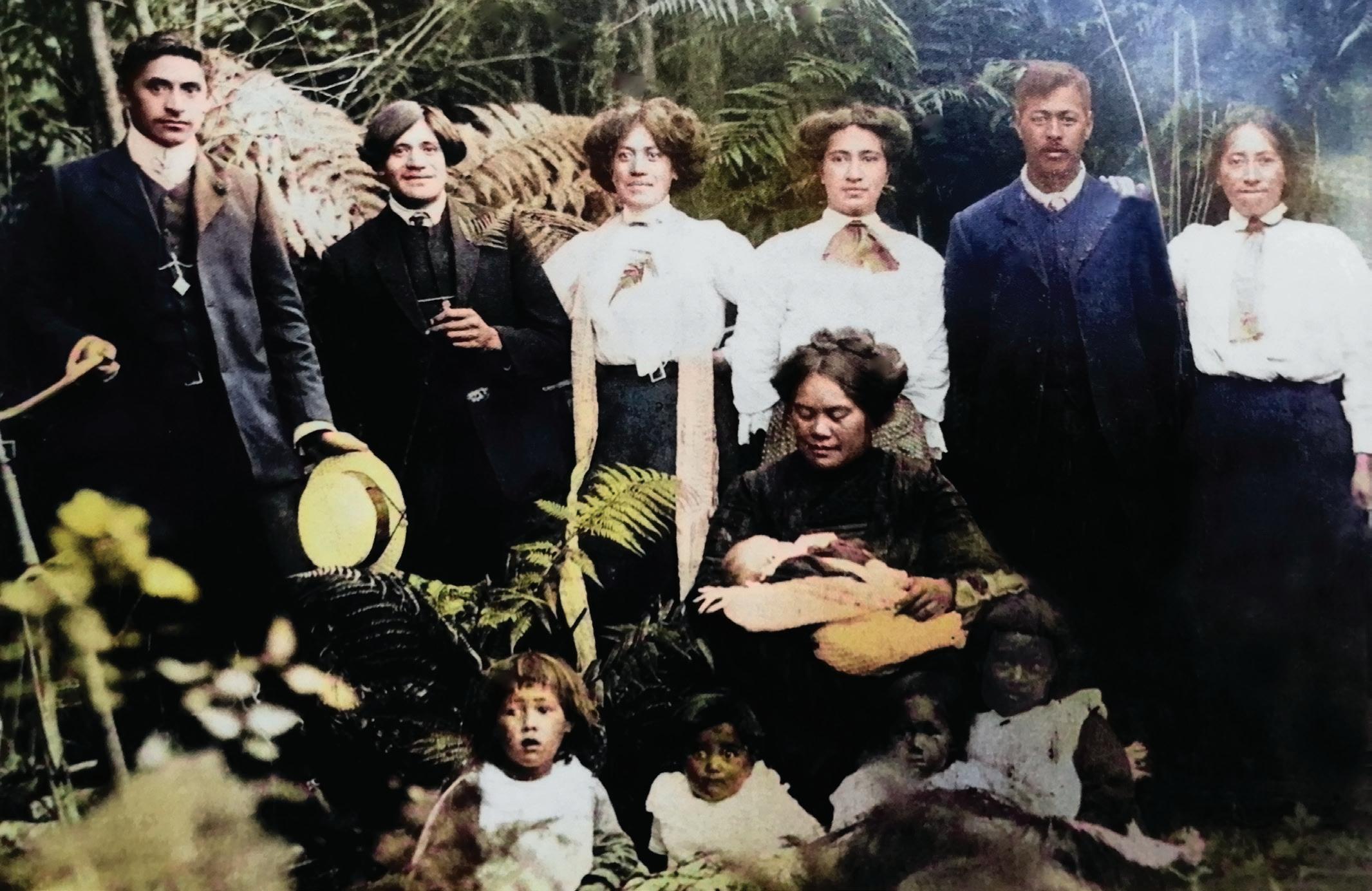
3 minute read
Pirika Tanginui
Pirika Tanginui
Pirika Tanginui was a Ngāti Tama tupuna associated with Aorere and Tukurua in Mohua. He was a very early convert to Christianity, baptised Wesleyan at Te Awaiti in Tory Channel on 1 August 1841. Pirika, his baptismal name, is probably a transliteration of Felix.
Advertisement
Pirika Tanginui was awarded just over 5 acres of Aorere reserve F, jointly with Inia Te Hunahuna, and 100 acres as sole owner in Aorere Section 5; Pirika purchased the other 50 acres of Section 5 from the Government. He also inherited or retained interests in land at Ōhanga, Whaitara in Taranaki.
Pirika married Kataraina Te Ihonga (aka Kataraina Moari or Katarina Te Ha), daughter of Te Ranginohokau and Meira Meira of Tukurua. Pirika moved to Tukurua where he and Kataraina maintained ahi kā after her parents’ death. According to baptism records, they had at least 9 children; the first was born in 1845 and 5 grew to adulthood; Pirihira, Harawira (Wīremu), Erena, Hopiha, Mata, Te Rihi (Taura), Meriana, Pirini and Kaita (Raita). However, in 1888, only four including Pirihira, Harawira, Mata and Te Rihi were listed as persons entitled to the Wellington Tenths.
Te Ranginohokau (Ngāti Tama) and Inia Te Hunahuna (Te Āti Awa) are represented in their respective carvings in the whare tūpuna Te Ao Mārama, at Onetahua marae in Mohua (Golden Bay).
Pirika is registered on the Massacre Bay Electoral Roll for 1857 and 1858 as farmer and freeholder of Tukurua. Both he and Kataraina signed an 1856 Ngāti Tama Deed ceding their claims in Massacre Bay for L 110.
In 1855 Tinline, a Government agent, investigating a dispute over land ownership with a Pākehā family wrote of Pirika: “He bears a good character as an obliging and industrious man, and it appears that he had fenced in and cropped a portion of these old cultivations…” i.e. the disputed land. In 1865, Alexander Mackay, Commissioner of Native Reserves, recognised the rights of the Pirika whānau at Tukurua.
A Pākehā neighbour, Elizabeth Caldwell, hoped for Māori help with her laundry, but quickly dismissed the idea of employing “….our nearest neighbours, old Catherine and Pirika her spouse were far above working for hire – she being a great Rangatira.” And when war broke out in Taranaki, she recorded “…our Māori friends began to look very sullen and silent – old Piraka was busy casting bullets ‘to shoot the white man’ he said when the boys questioned him.”
At some time in the 1870s the Pirika whānau left Tukurua to live in Taranaki, and Pirika Tanginui died at Parihaka in about 1880. The Caldwell family thought Tukurua was abandoned after a number of tuberculosis deaths there, but the whānau may have moved to protect their lands under threat in Taranaki, and to support the Parihaka protest movement as other Ngāti Tama whānau did like the Rāmeka whānau of Tākaka.
The Mitchell whānau of Tākaka are descendants of Pirika Tanginui who have maintained ahi kā since the 1830s. The Tōpine whānau who shifted to Tākaka in 1978 are also Pirika descendants. Eddie Tōpine was caretaker at Onetahua marae until his untimely death on December 16, 2022. He is buried at Rototai cemetery in Tākaka.

Meri Rangiauahi Mōrehu and whānau, c. 1918-1920: L. to R.: Hoani Meihana, Ruka (Luke) Mitchell, Ngāwati Mitchell (nee Mōrehu), Meira Meira Teihonga Mōrehu, Takarangi Mōrehu, Hārata Mōrehu; seated - Meri Rangiauahi Mōrehu. Children of Ngāwati and Luke Mitchell

